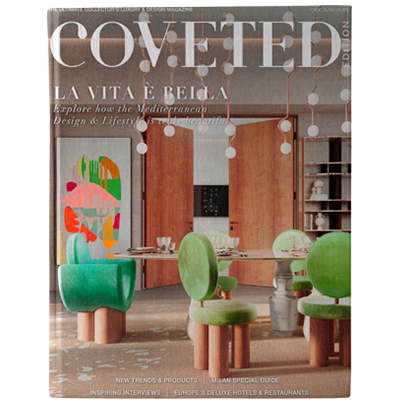When it comes to crafting the perfect meal, the right tools can make all the difference. Professional chefs rely on high-quality equipment not just for efficiency but for precision and consistency. So why shouldn’t we bring some of that professional edge into our own kitchens? With the right design approach, integrating culinary-grade tools into our home kitchens can elevate both functionality and style.
It’s not just about adding gadgets—it’s about creating a space that inspires creativity while meeting practical needs. From sleek knife storage to commercial-grade appliances, we can reimagine our kitchens to blend professional performance with the comfort of home. But what is Smartwhip? It’s an advanced nitrous oxide system designed to enhance culinary techniques, making it easier to create airy textures and innovative dishes. Let’s explore how thoughtful design can transform our cooking spaces into chef-worthy culinary hubs.
Understanding Professional Culinary Tools
Professional culinary tools aren’t just about functionality; they’re specifically designed for precision, durability, and efficiency. These tools, commonly found in commercial kitchens, are increasingly being incorporated into home settings to elevate cooking experiences.
Key Features of Professional Culinary Tools
Professional tools emphasize quality and performance. High-carbon stainless steel knives, for example, maintain sharpness longer and resist corrosion. Adjustable mandolines enable precise slicing, essential for uniform cooking. Cast iron pans offer excellent heat retention and versatility, transitioning seamlessly from stovetop to oven. Tools like immersion blenders provide superior control, blending sauces or soups directly in pots without additional equipment. Ergonomics also matter, as professional tools often feature handles designed for prolonged use.
Benefits of Using Professional-Grade Equipment at Home
Using these tools at home ensures better results and improved efficiency. A commercial-grade stand mixer handles heavy-duty tasks like kneading dough with ease, saving time while producing consistent textures. Multi-layered stainless steel cookware distributes heat evenly, preventing hot spots during cooking. Tools like sous-vide machines allow home cooks to achieve restaurant-level precision in dish preparation. Incorporating professional-grade options often reduces wear and tear, lasting longer under regular use than standard consumer alternatives.
Challenges in Integrating Professional Tools at Home
Bringing professional-grade culinary tools into home kitchens elevates cooking but introduces various challenges. These can impact efficiency, usability, and the overall kitchen experience without thoughtful planning.
Space and Storage Considerations
Home kitchens often provide limited space compared to commercial setups. Professional tools like stand mixers, sous-vide machines, and large carbon steel pans demand proper storage and counter space for easy access. Overcrowded countertops or cramped cabinets may hinder functionality. Creating dedicated “work zones,” including baking or cooking-specific areas, optimizes space and reduces unnecessary movements.
Cost and Accessibility
High-quality professional tools come with steep price tags. Items like Vitamix blenders or multi-layered stainless steel cookware significantly increase initial investment. Additionally, some tools may require sourcing from specialty stores or websites, which can limit accessibility. Prioritizing essential equipment and focusing on long-term durability helps justify these costs.
Design Solutions for Home Kitchens
Integrating professional culinary tools into home kitchens elevates functionality and enables efficient workflows. Thoughtful design solutions focus on maximizing space and usability without compromising style or convenience.
Adapting Professional Tools for Home Use
Professional culinary tools often need adjustments for home kitchens. Compact designs, such as smaller stand mixers or foldable mandolines, fit limited spaces while retaining high performance. Selecting tools designed for home use, like multi-purpose knives or combination stovetop grills, ensures versatility. Storage solutions like magnetic knife strips and nesting bowls save space while keeping tools accessible. Ergonomic designs, present in pro-grade tools, make them suitable for prolonged use at home.
Creating Multi-Functional Spaces
Home kitchens benefit from multi-functional spaces where distinct zones boost efficiency. Incorporating chef-like layouts divides areas into cooking, prep, and cleanup stations. A functional work triangle, featuring a stove, sink, and refrigerator placed efficiently, minimizes movement. Adding pull-out storage, under-counter refrigeration, or slim pantry racks ensures tools and ingredients stay within easy reach. Aligning kitchen layouts with tasks simplifies cooking while maintaining a clean, organized look.
| Professional Tool | Home-Friendly Feature | Importance |
|---|---|---|
| High-Carbon Steel Knives | Ergonomic Handles | Comfort during prolonged prep tasks |
| Compact Sous-Vide Machines | Smaller Form Factor | Precision cooking in smaller kitchens |
| Multilayered Cookware | Stackable Design | Even heat distribution and easy storage |
| Commercial-style Mixers | Compact, High Torque | Efficiency in dough-making and batter mixing |
Popular Professional Tools for Home Kitchens
Integrating professional-grade culinary tools into home kitchens boosts precision and functionality. Certain items stand out as both practical and accessible for home chefs aiming for restaurant-quality results.
Essential Tools to Begin With
An instant-read thermometer, like the ThermoWorks Thermapen ONE, ensures accurate temperature control. It’s fast and user-friendly, making it indispensable for perfectly cooked meats and baked goods.
A food mill, such as the OXO model, simplifies tasks like creating smooth sauces and creamy mashed potatoes. The silicone-coated feet prevent slipping, while interchangeable sieve discs offer versatility in texture control.
A sauce spoon aids in essential tasks like basting, tasting, and plating. With a slightly larger bowl than standard spoons, it efficiently handles both functional and decorative purposes.
High-End Options for Enthusiasts
For those seeking luxury performance, sous-vide machines guarantee chef-level precision by maintaining exact cooking temperatures. This method locks in flavors and improves texture for proteins and vegetables.
Multi-layer stainless steel cookware ensures even heat distribution, making it ideal for delicate recipes. Additionally, high-carbon stainless steel knives maintain exceptional sharpness, reducing frequent sharpening needs.
Compact commercial stand mixers accommodate smaller spaces while offering the power of professional models. These mixers tackle heavy-duty tasks like kneading bread or whipping dense batters effortlessly.
Future Trends in Culinary Tool Integration
The evolution of home kitchens now centers on innovation and design functionality. Professional culinary tools are adapting to meet modern demands, ensuring efficient integration into home spaces.
Smart Cooking Technology
Connected appliances redefine how home cooks interact with kitchens. Smart refrigerators track inventory and propose recipes using available ingredients, making meal planning more efficient. Ovens now offer app-controlled preheating, improving convenience and precision. Tools like app-enabled precision scales and voice-activated devices simplify operations while integrating seamlessly with modern smart home ecosystems. Automation eliminates repetitive tasks, empowering users to focus on creativity.
Sustainable and Eco-Friendly Designs
Eco-conscious designs dominate kitchen innovations as sustainability takes priority. Brands now offer tools manufactured from recyclable materials like bamboo and durable stainless steel. Energy-efficient appliances, such as induction cooktops, minimize power consumption while maintaining high performance. Reusable tools like silicone storage bags and beeswax wraps reduce kitchen waste, promoting sustainable lifestyles. Green-certified products are becoming essential for eco-aware consumers seeking functionality without harming the environment.
Conclusion
Integrating professional culinary tools into home kitchens isn’t just about upgrading equipment—it’s about transforming the way we cook and design our spaces. By prioritizing functionality, thoughtful design, and high-quality tools, we can create kitchens that inspire creativity and deliver exceptional results.
While challenges like space limitations and cost require careful planning, the benefits of using professional-grade tools far outweigh the hurdles. With smart storage solutions, compact designs, and a focus on essential equipment, we can enjoy the precision and durability of chef-level tools without compromising our home’s style or efficiency.
As innovation and sustainability continue to shape the future of culinary tools, we have more opportunities than ever to build kitchens that are not only functional but also eco-friendly and forward-thinking. By embracing these advancements, we can elevate our cooking experiences and turn our kitchens into true culinary havens.

































